Journey through the depths of history with the Historic Tour in Mammoth Cave National Park. This immersive experience takes you through a series of mesmerizing caverns, each revealing the secrets of an ancient underground world. From the grandeur of Mammoth Dome, the largest known dome in the cave system, to the echoes of the past in passages like Broadway Avenue and Fat Man's Misery, this tour offers a glimpse into the geological wonders and cultural significance of Mammoth Cave.
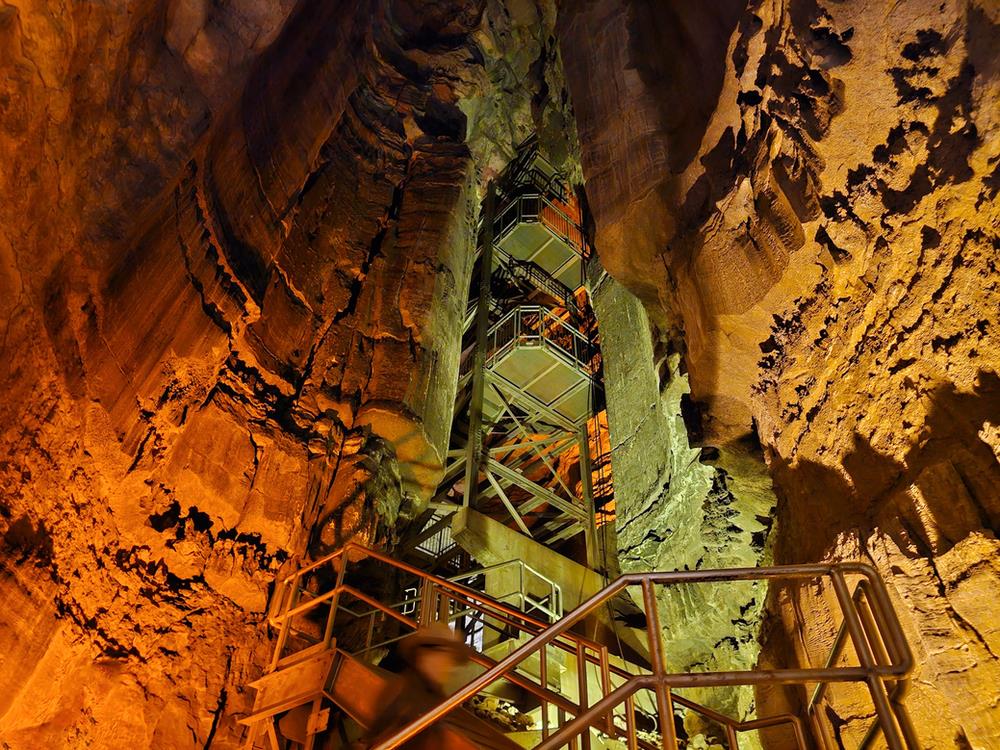

Bathrooms No
Water No
Stairs 230 descending, 210 ascending
Duration 2 hours
The tour begins with a quarter-mile stroll along the paved Historic Entrance Trail, starting at the Mammoth Cave Visitor Center. The path descends through a steep valley to reach the Historic Entrance, the largest natural opening into Mammoth Cave, serving as a passage for exploration for nearly 3,000 years.
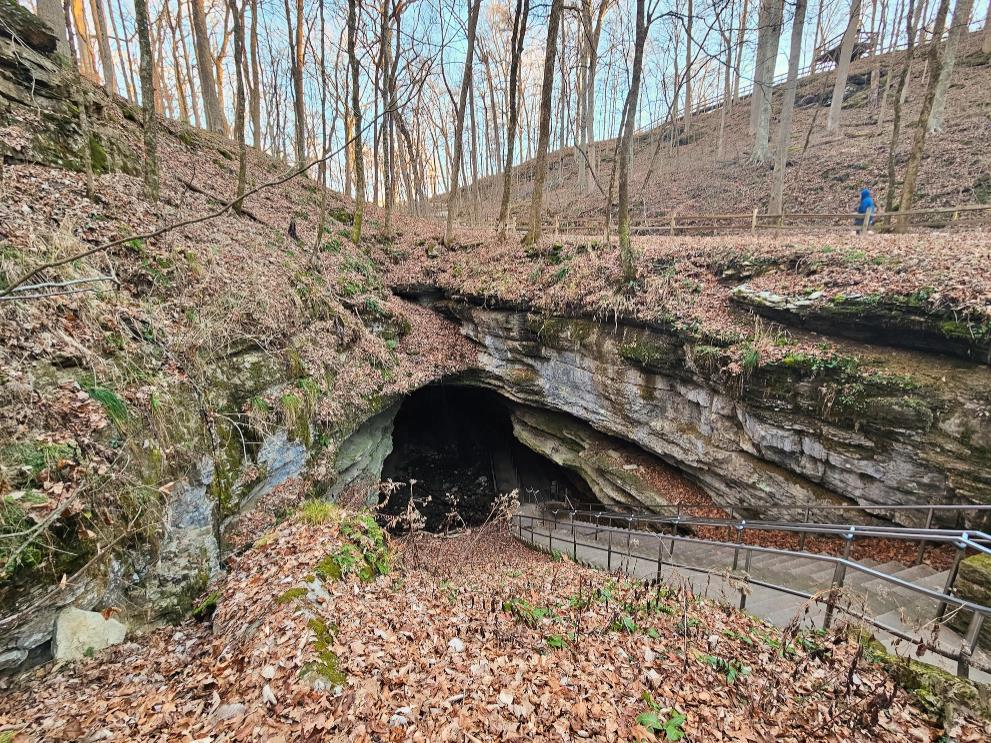
After a short descent into the cave and a brief walk through the dimly lit passage known as Houchins Narrows, the tour arrives at the Rotunda, one of Mammoth Cave's most well-known cave rooms. The expansive chamber spans roughly one quarter acre and features a circular-shaped ceiling that towers nearly 40 feet above.
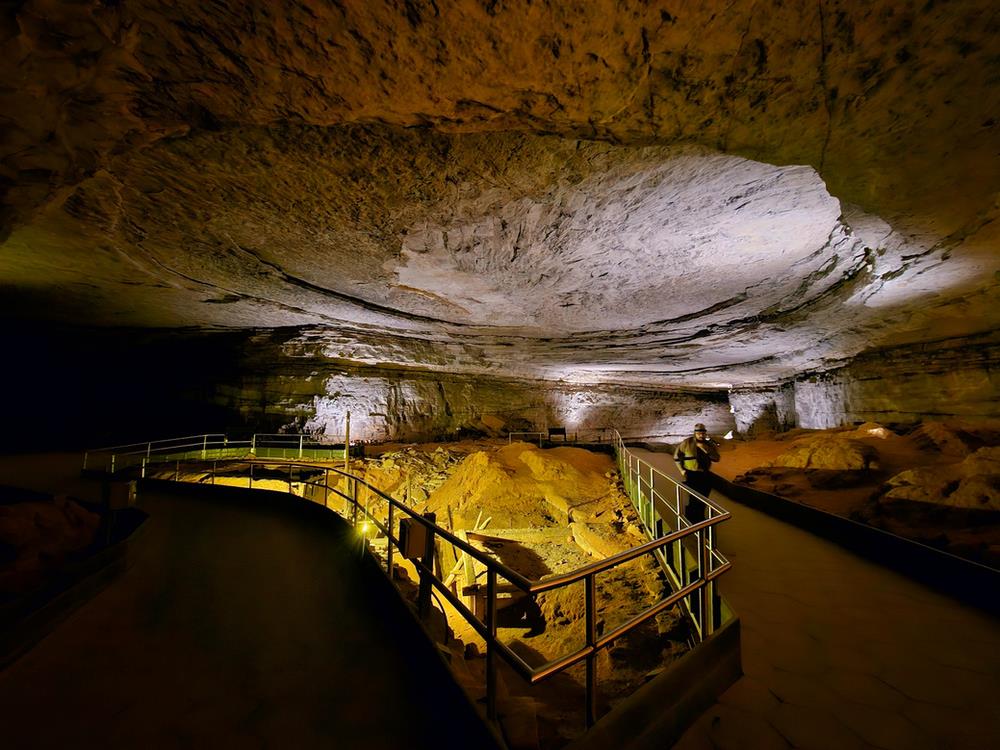
Here, in Mammoth Cave's sixth-largest cave room, three intersecting passages - Houchins Narrows, Broadway, and Audubon Avenue - converge. The tour progresses along Broadway Avenue, where visitors will encounter numerous wooden pipes on the left side of the cave, remnants of saltpetre mining from the early 1800s.

After a few hundred yards, Broadway Avenue descends into a large canyon room named Methodist Church. In the 1830s, Reverend George Slaughter Gatewood conducted church services here, occasionally taking parishioners' lanterns upon their arrival to ensure they remained throughout his sermons. He preached from a formation referred to as The Pulpit, which can be found along the left side of the trail, near the bottom of the Methodist Church room.
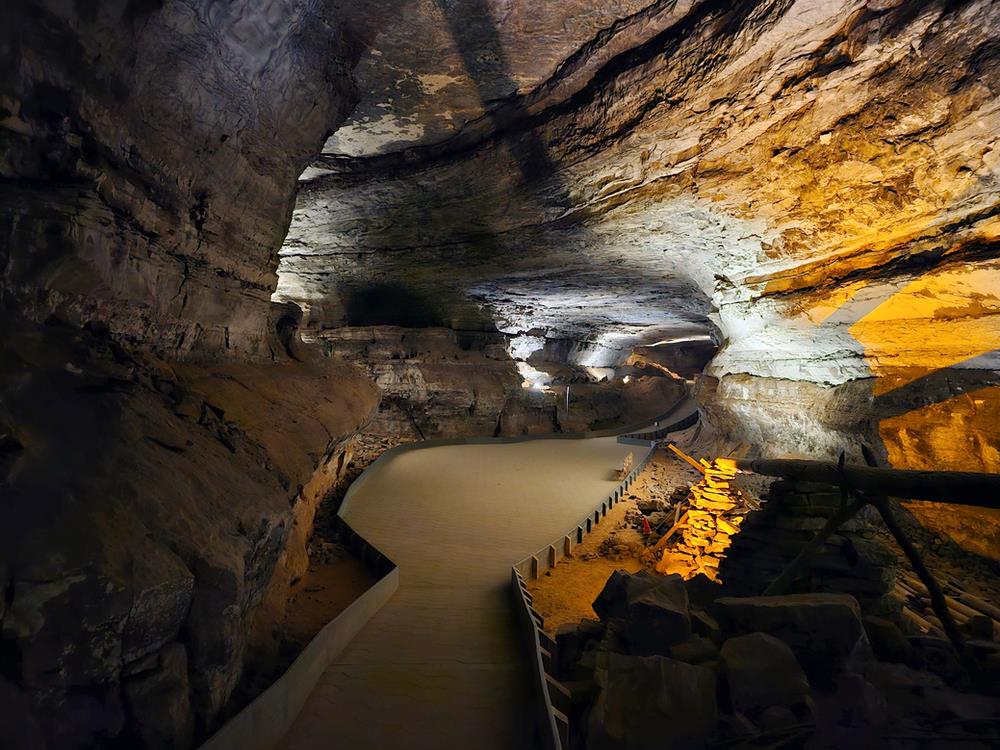
Rangers frequently pause at this point to delve into the cave's history. If you're lucky, they may showcase one of the instances of ancient Native American rock art within Mammoth Cave.
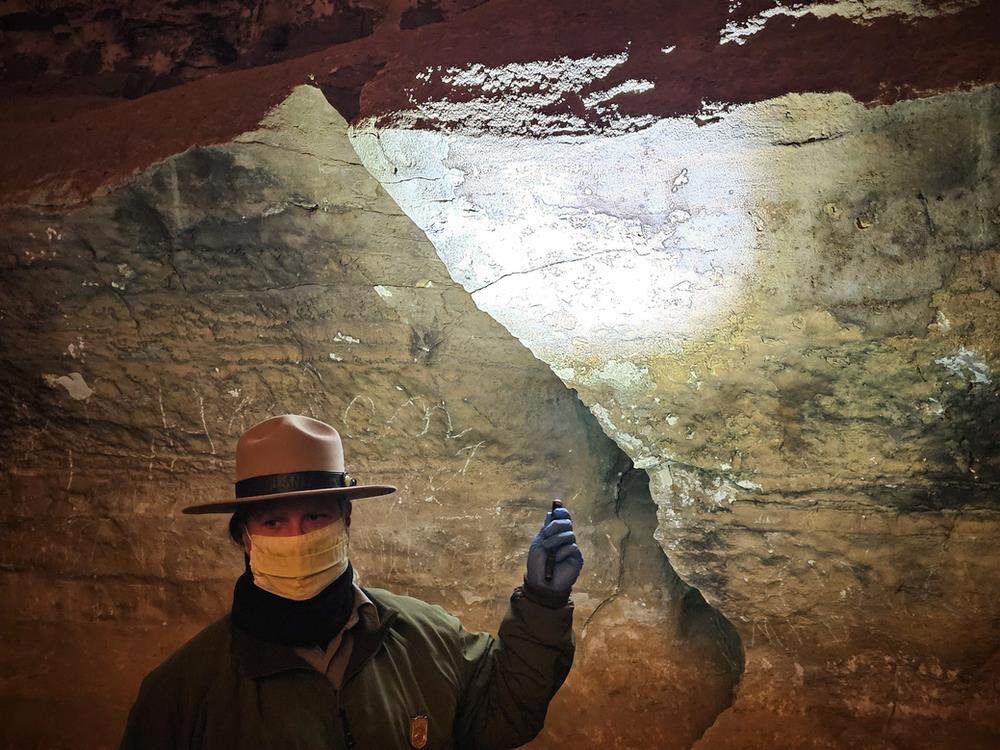
Near the edge of one of the enormous limestone slabs along the trail, there is a petroglyph resembling a checkerboard pattern. The true intention of the ancient artist remains unknown, however, similar depictions have been discovered both in the local area and across the country.
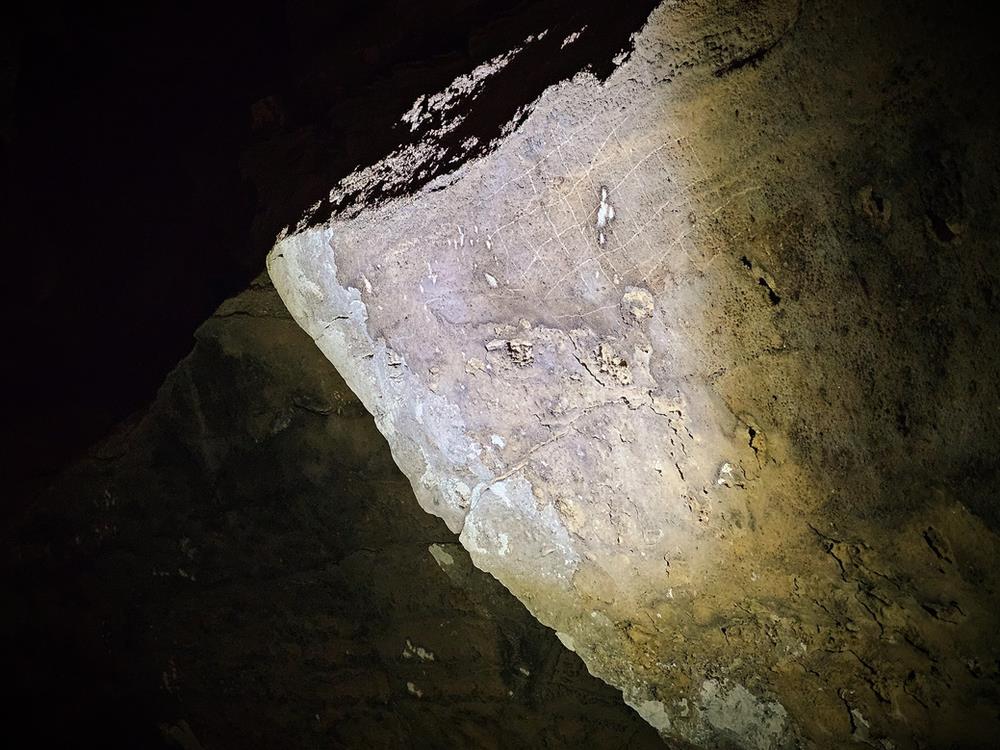
Proceeding from Methodist Church, the tour advances along Broadway Avenue, passing more leaching vats akin to those in the Rotunda, until reaching a junction known as Booth's Amphitheater. The large canyon passage, named after 19th-century Shakespearean actor Edwin Booth, brother of the infamous John Wilkes Booth, guides visitors to Gothic Avenue. Those who later opt for the ,,Gothic Avenue Tour would turn right and ascend a short staircase, while those on the Historic or Extended Historic Tours continue straight.
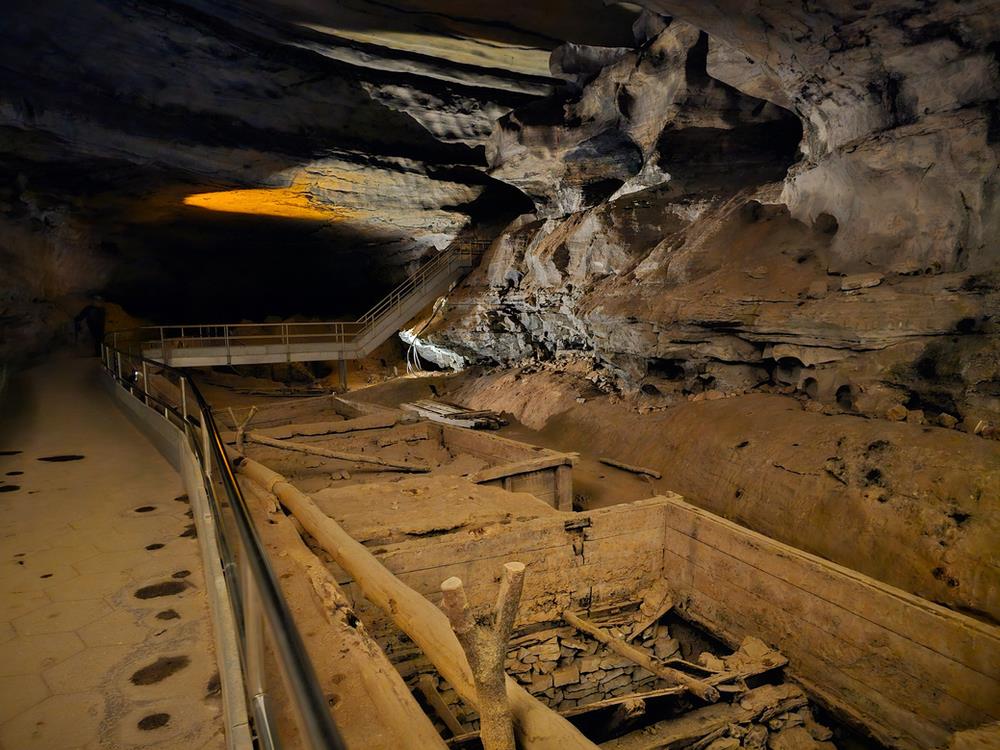
Beyond Booth's Amphitheater, the Historic Tour continues along the gentle rolling contour of Broadway Avenue, venturing deeper into the cave.

Upon reaching The Giant's Coffin, a colossal 1,000-ton boulder measuring 48 feet in length and 20 feet in height, embellished with numerous historical signatures, park rangers pause to elaborate on the area and address any questions that visitors may have.

The initial moniker bestowed upon this landmark was "Steamboat," but as the 1840s unfolded, visitors collectively envisioned it as a colossal coffin fit for a giant. Guides began crafting narratives about an ancient race of giants that once traversed this terrain. Among them, a young giant named Cozad made daily excursions into the depths of a cave, discovering a realm untouched by sunlight, inhabited by peculiar creatures thriving in darkness. Cozad formed a bond with these beings, pledging to safeguard them and their abode.
Local tribes, acknowledging Cozad's benevolence, made daily offerings at the cave entrance. Despite the passage of time, the offerings vanished each night, fostering a harmonious relationship between the tribes and Cozad. The entrance to the underworld remained accessible, contingent on the preservation of the cave and its inhabitants.
One fateful night, a tribal warrior patrolling the entrance noticed the offerings remained untouched. Concerned tribal leaders feared they had offended the giant, prompting them to dispatch their finest warriors and scholars on a pilgrimage. Illuminated by torchlight, the group ventured into the depths, witnessing shadows dancing in the amber glow against ashen stone walls. Deep within the silence, they discovered the aged gentle giant peacefully slumbering on the stone floor.
Despite numerous attempts to awaken him, the giant remained undisturbed. In response, the tribe constructed the stone coffin that now safeguards him. Legend foretells that when his cave companions require his assistance, the giant will awaken and traverse these passages once more.
From here, the route continues behind The Giant's Coffin and leads through Dante's Gateway, a narrow passage guiding visitors from the expansive upper sections to the lower areas of the cave. This snug passageway is named after Dante Alighieri's Inferno, where Dante's Gateway is depicted as the entrance to the Underworld.
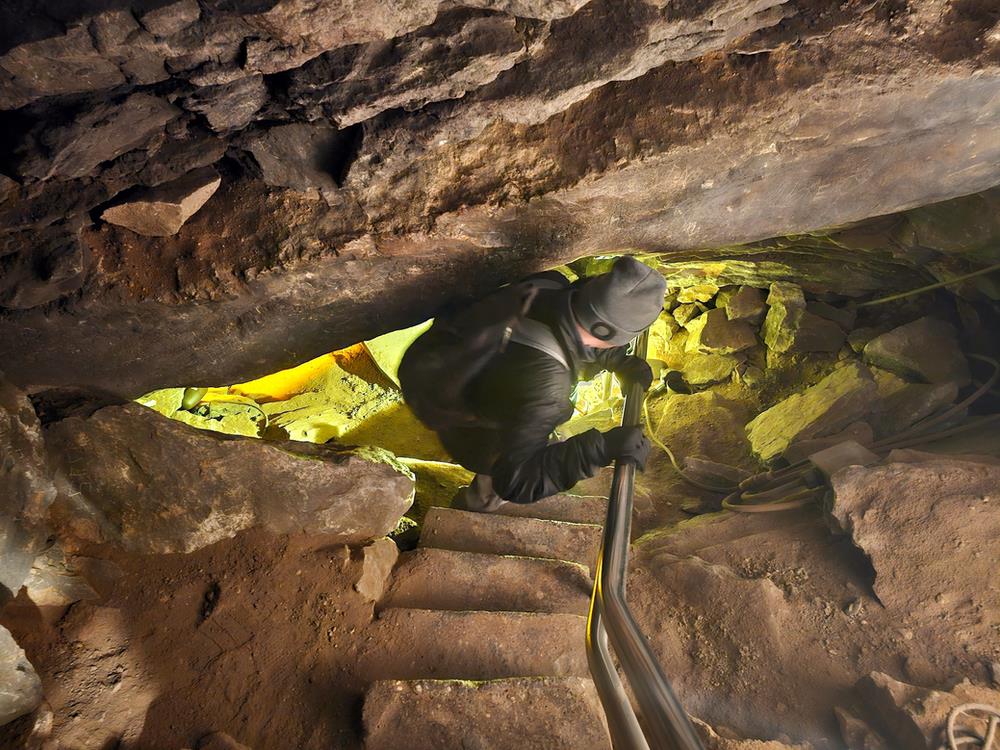
Following the descent of Dante's Gateway, the tour continues through the Wooden Bowl Room and Black Snake Avenue, both low-clearance passages adorned with an abundance of historical cave graffiti.
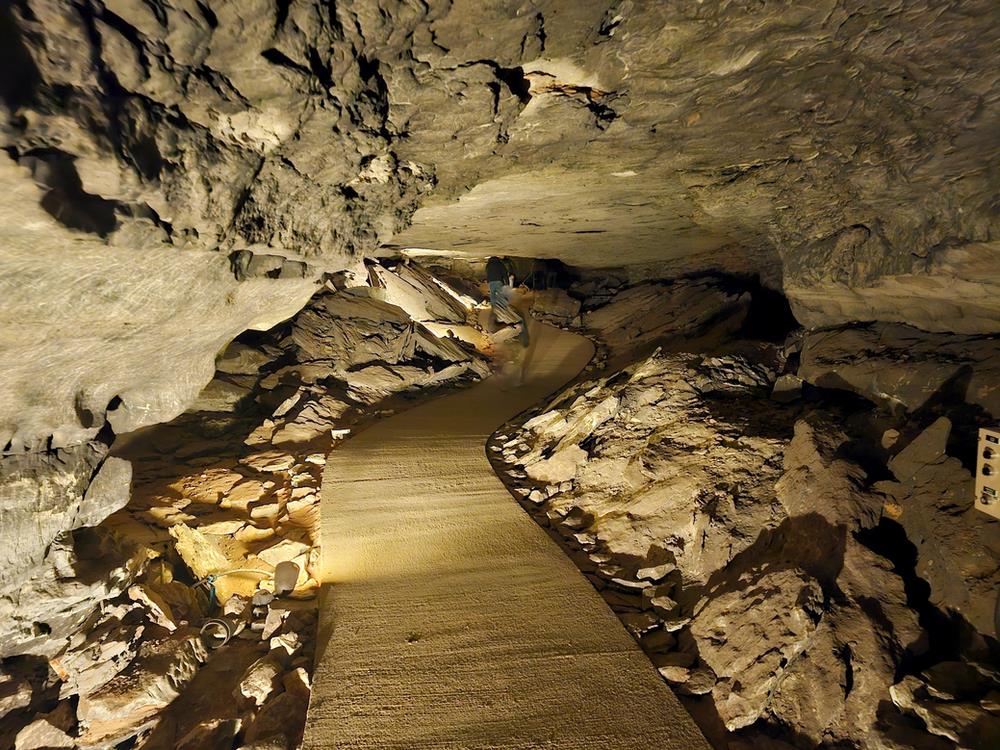
The path continues over Side Saddle Pit, and right after that, it traverses the Bottomless Pit—a storied feature of Mammoth Cave, plunging 105 feet deep. A steel bridge with grated flooring stretches across both pits, but those with a healthy fear of heights may want to avoid looking down.
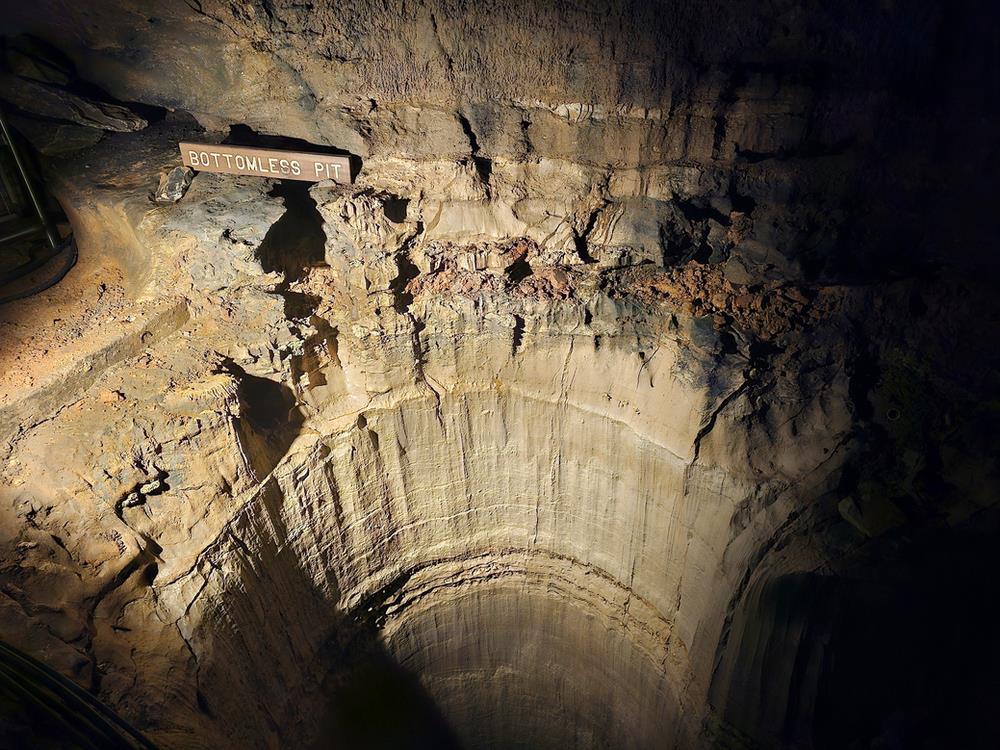
Prior to 1838, the Bottomless Pit remained unconquered. The very idea of attempting to cross it was considered insane. There were no bridges spanning it and no ledges to walk along to pass it. In the early days of Mammoth Cave, explorers would test the pit's depth by tossing torches into it, labeling it "bottomless" when the light became invisible. Stories of the treacherous pit became widespread, and in February 1838, various newspapers circulated reports about the pit, suggesting its profound depth might extend throughout the entire diameter of the earth.

Despite the uncertainty surrounding the Bottomless Pit, Stephen Bishop, an enslaved cave guide and the greatest spelunker to ever explore Mammoth Cave, remained undeterred. In the autumn of 1838, he achieved the remarkable feat of becoming the first person to traverse it. The narrative unfolds with Hiram C Stevenson, a native of Kentucky, tempting Bishop with a "fistful of money" to guide him to uncharted territory within the cave—a place no visitor had ever set foot. Undaunted, Bishop led Stevenson to the Bottomless Pit, improvising a precarious wooden ladder to bridge the gap. With Bishop navigating while gripping his lantern between his teeth and Stevenson securing the ladder at one end, he crawled to the opposite side. Stevenson soon followed, and once they returned from their expedition, he rewarded Bishop with a gold piece. A newspaper article from The Raleigh Register, dated October 15, 1841, outlines the achievements of Bishop and Stevenson, along with highlighting other notable contributions made by Bishop to Mammoth Cave.
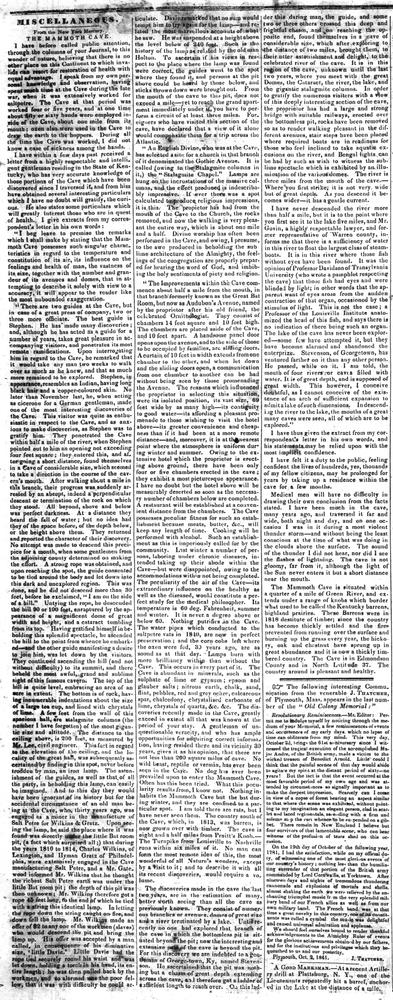
Following the Bottomless Pit, the route progresses through more low-hanging passages, eventually leading to Fat Man's Misery. Discovered by Stephen Bishop, Fat Man's Misery, formerly named Winding Way, is a keyhole-shaped passage spanning approximately 100 feet in length and slightly wider than hip-width. Toward the end of the passage, visitors navigate through Tall Man's Misery, a section with low clearance that reduces to a height of only three feet.
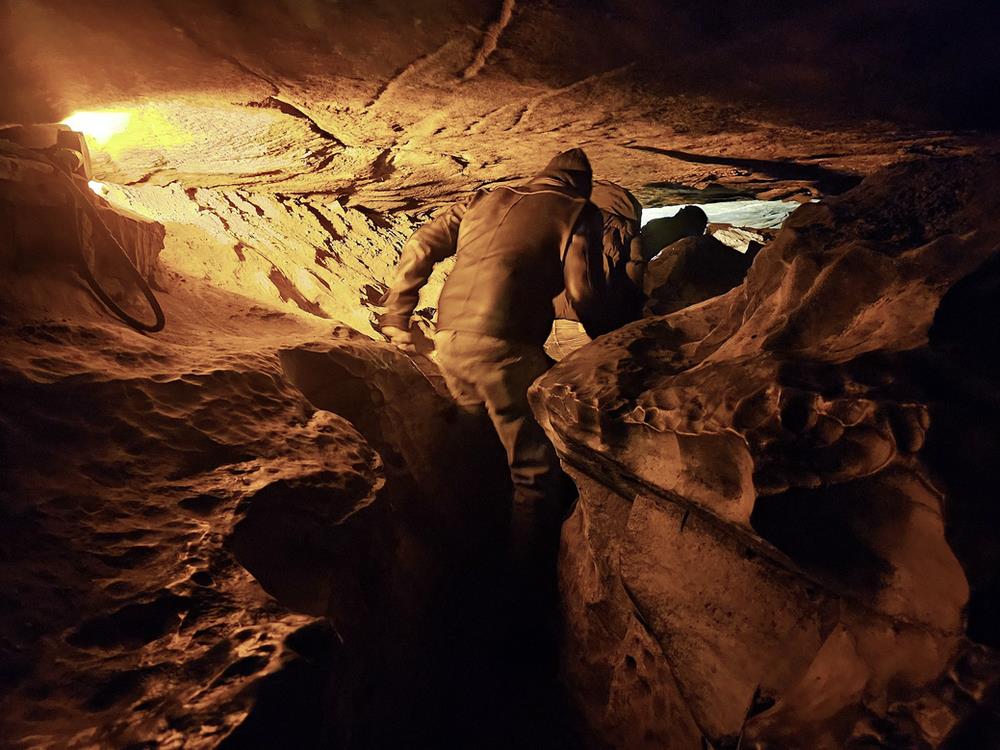
After navigating through Fat Man's Misery, the tour arrives at Great Relief Hall, where rangers commonly take a break to answer visitors' questions and provide insights into the upcoming cave features. About 200 feet from the beginning of Great Relief Hall, an intriguing piece of graffiti appears, bearing the inscription "Landram's Saxhorn Band, 1855." Although it is believed to be the handiwork of a musical group that explored Mammoth Cave a few years before the Civil War, there is no documented record of the band in park registers, shrouding the identity of the band in mystery to the present day.
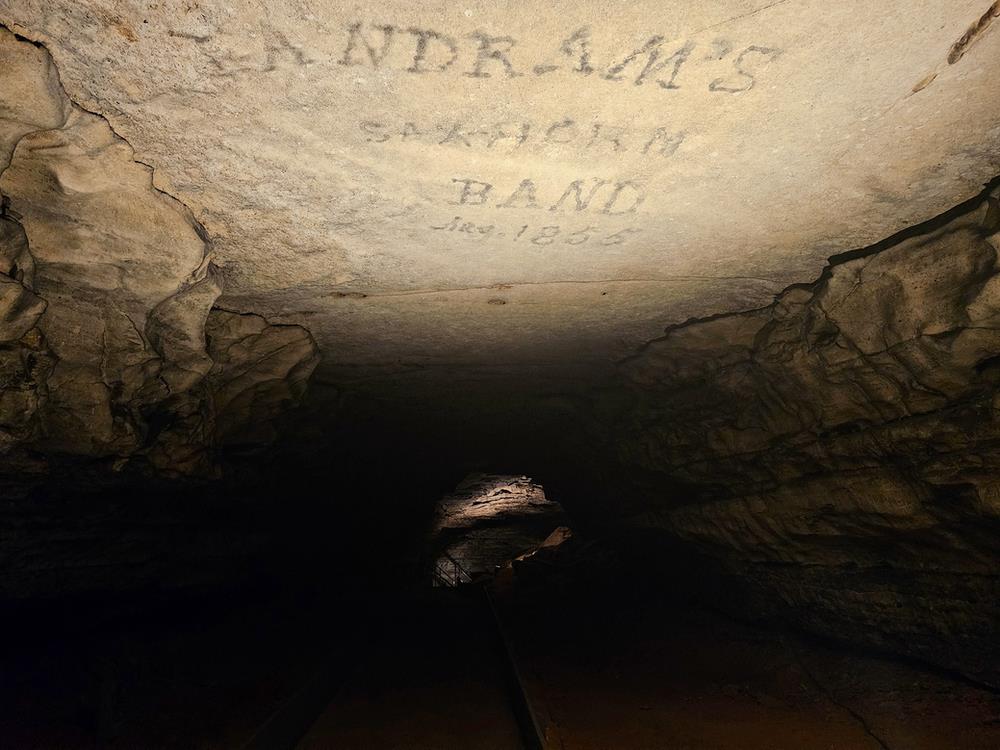
Following Great Relief Hall, the path winds by River Hall and along Sparks Avenue, leading to a standout feature of the tour—Mammoth Dome. This remarkable 190-foot-tall vertical shaft comprises Crevice Pit at its base and Mammoth Dome at its apex, earning the title of the largest known dome in the cave system. The Mammoth Dome Tower acts as a bridge linking the lower Historic Trail to the upper Historic Trail, ascending over 200 feet above the cave floor via nearly 140 stairs.

Before ascending the tower, visitors can enjoy a breathtaking view of Mammoth Dome overhead.
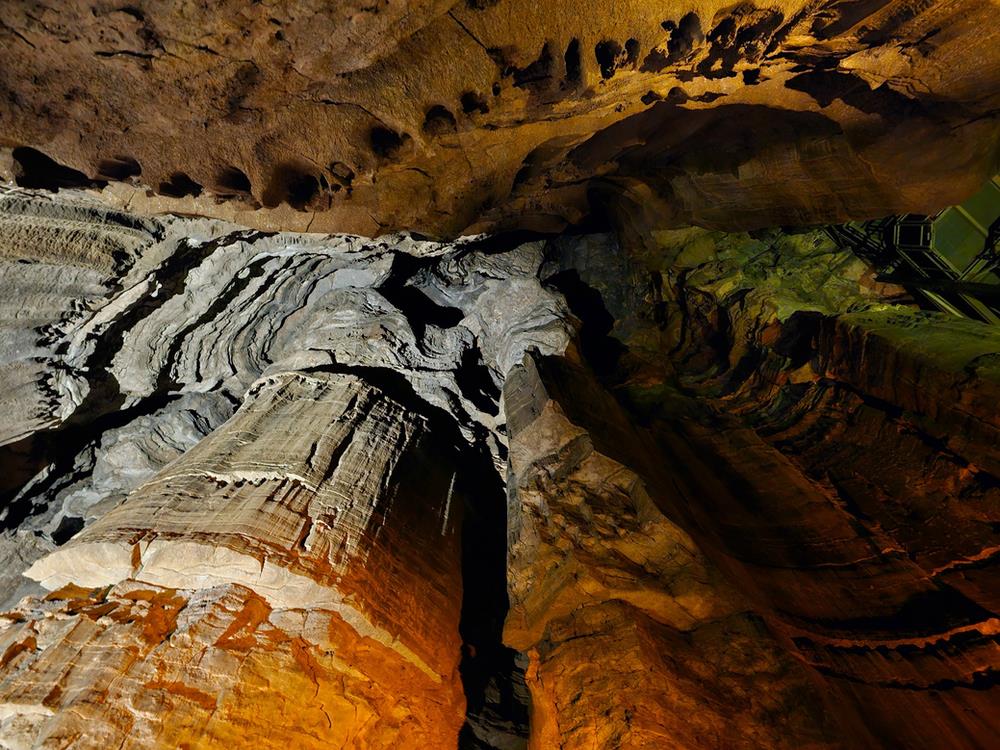
While climbing the tower, visitors can enjoy incredible views from above, capturing the splendid beauty of both Mammoth Dome and Crevice Pit.
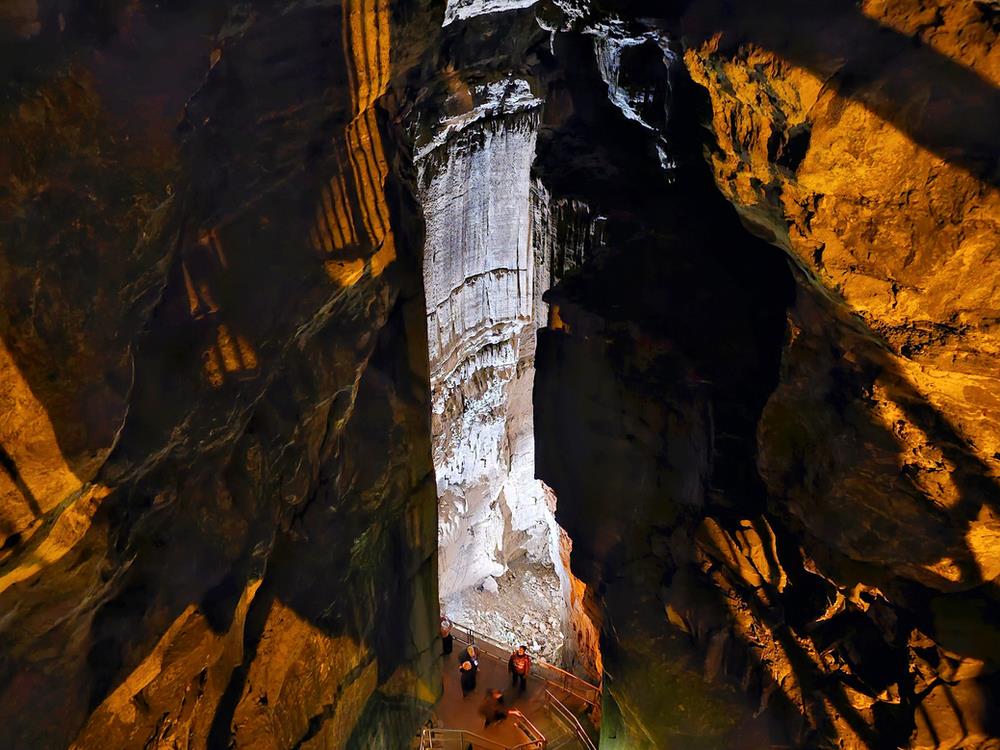
Upon reaching the top of the tower, the tour continues along Little Bat Avenue, a former residence for scores of bats. Although the passage is now devoid of bats, observant visitors may still notice stains on the ceiling left by the bats' feet when they used to roost there.
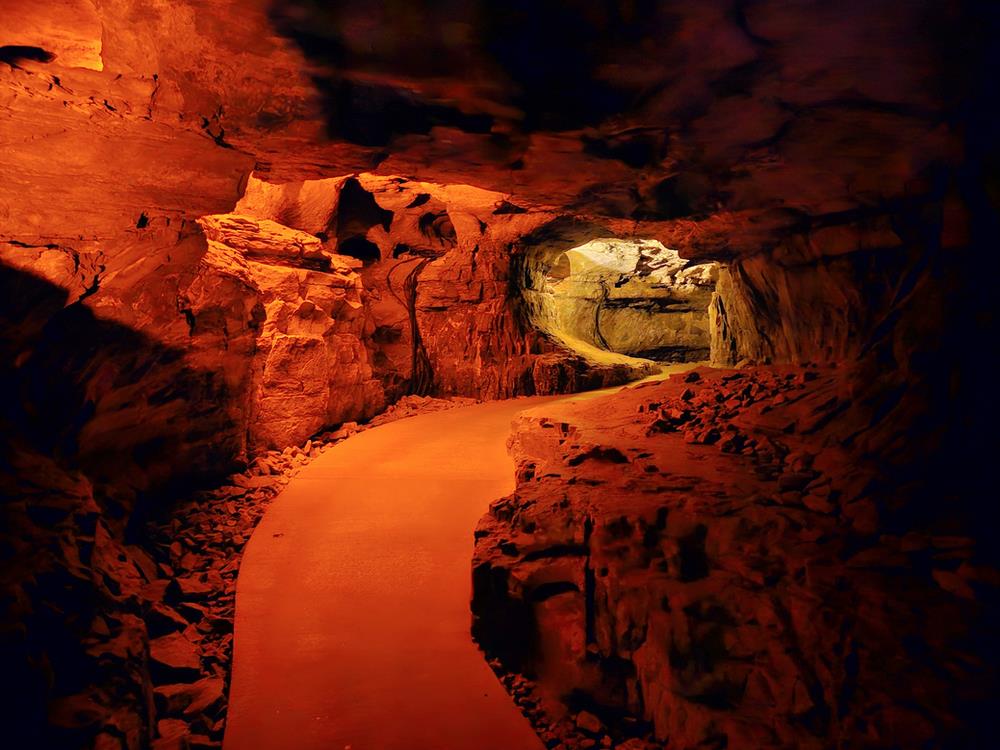
Little Bat Avenue terminates at Audubon Avenue, which circles back to the Rotunda, creating a loop. From the Rotunda, visitors are led back to the Historical Entrance, where the tour comes to its conclusion.
https://www.greatamericanhikes.com/post/historic-tour-in-mammoth-cave-national-park
 CampingSurvivalistHuntingFishingExploringHikingPrivacy PolicyTerms And Conditions
CampingSurvivalistHuntingFishingExploringHikingPrivacy PolicyTerms And Conditions
